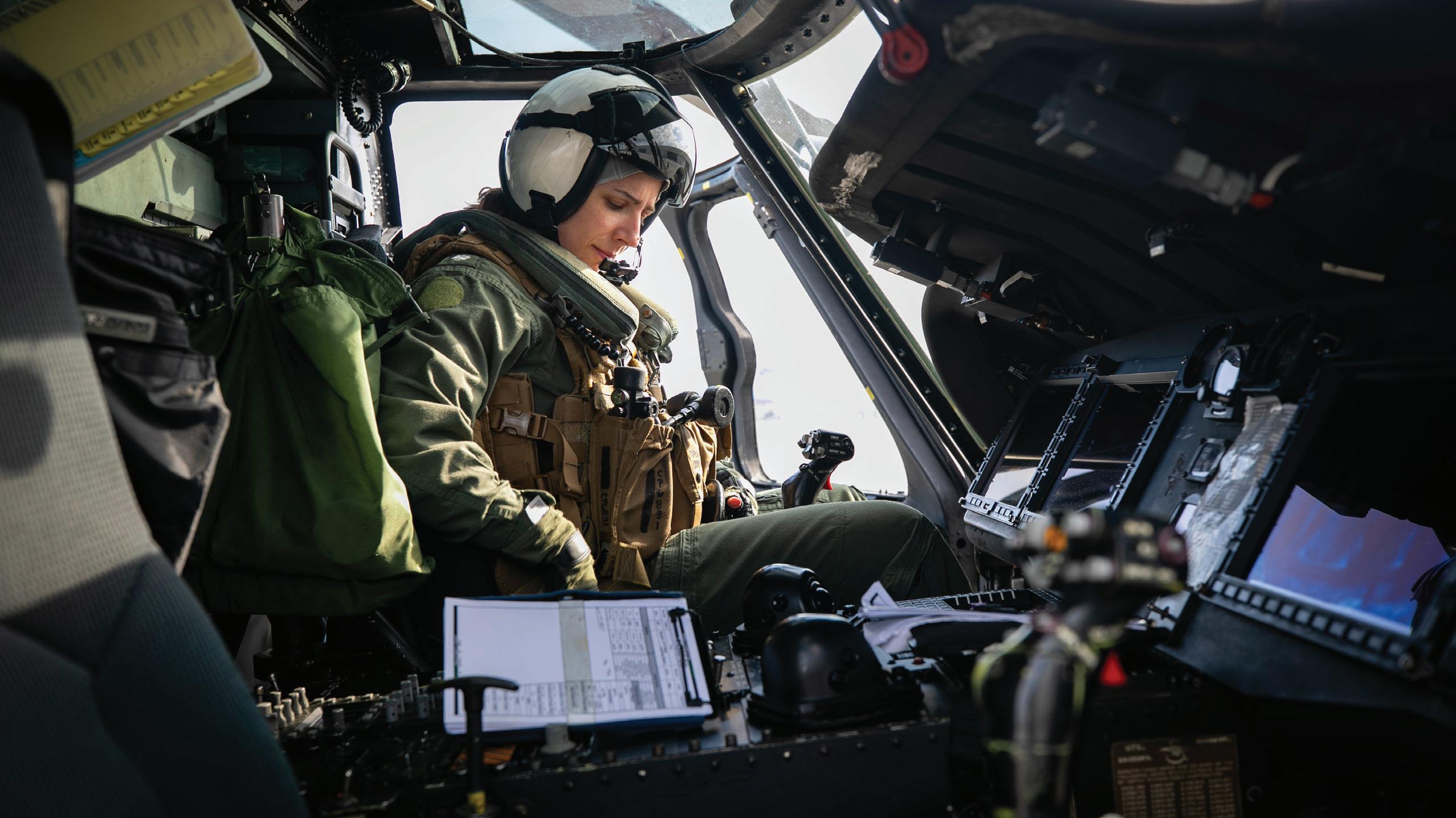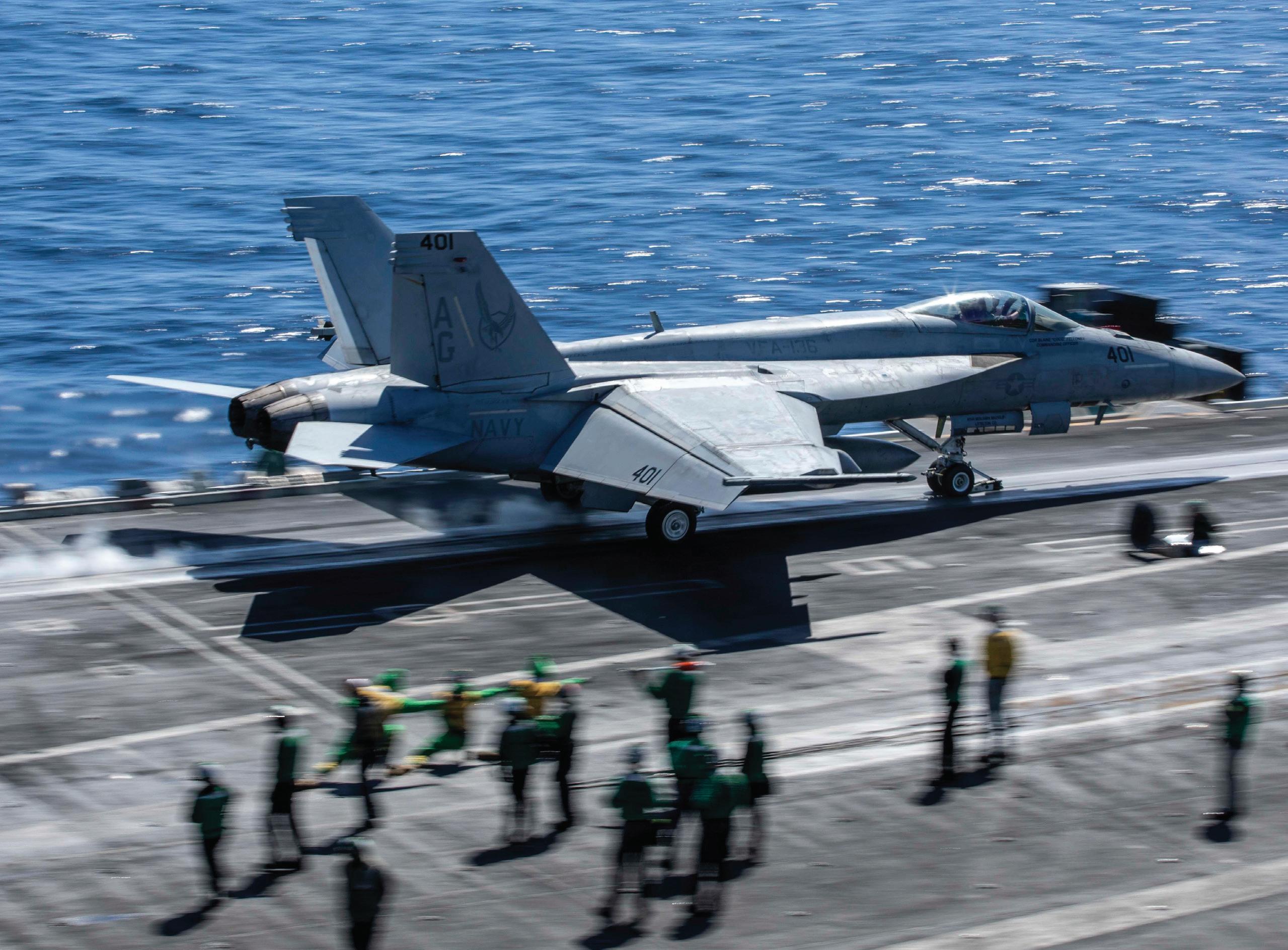
6 minute read
Combating Real & Perceived Pressures in Naval Aviation
The aviation community is a high-pressure environment. Sometimes that pressure, real or perceived, results in pilots taking unnecessary risks. Real pressures stand the test of reason; they demand a higher risk tolerance and sometimes fall within the guidelines of operational necessity. However, pressures can also be internal in nature and self-imposed, such as “get-home-itis” and are known as perceived pressures. Unlike real pressures, perceived pressures can be emotionally charged and especially dangerous without controls. Without logically sorting through these internal influences, pilots can establish a false equivalence between real and perceived pressures, adding unnecessary stress and risk to themselves and their crew. Distinguishing between real and perceived pressure is critical to maintaining safe practices and making sound decisions.
We aim to bridge the knowledge gap of real and perceived pressures by discussing the effects of pressure as a whole, examining how some communities may be especially vulnerable to the adverse effects of pressure and explaining how establishing a solid organizational safety culture is an incredibly effective tool for mitigating these risks in the future.
Understanding the causal relationship between stress and pressure, mainly how it influences our ability to manage risk, is crucial in discussing the effects of real and perceived pressure in the aviation community. A United Kingdom Defence Science and Technology Lab study compared how military service members fared against their civilian counterparts in managing impulsive sensation seeking, a “model of how people seek or avoid physiological and psychological sensation.” This study found that the military demographic – a community that arguably faces more pressure, real and perceived, in the workplace –was more likely to make riskier decisions than the civilian group. Interestingly, the study also found the sensation-seeking behavior that drove this higher risk tolerance was higher among military personnel in combat roles than in support roles. These takeaways are worth noting in Naval aviation, where we often find ourselves in high-pressure environments. According to these findings, not only is the Navy as a whole more likely to attract personalities that accept more risk than the civilian world, but those communities closer to the tip of the spear may be even more susceptible to higher risk-taking behaviors due to their proximity to potential conflict.
Because our position as naval aviators on this risk tolerance spectrum sits opposite the general population, it is especially worthwhile to look toward the civilian sector for an outside perspective on using the RM process and fortifying our safety culture optimally. A case study from the Emergency Medical Services (EMS) helicopter community illustrates how the industry implemented controls to combat risks from real and perceived pressures in critical situations. The National Transportation Safety Board found that, before recent policy changes, EMS pilots took unnecessary risks leading to accidents with perceived pressure as the potential cause. For example, when pilots were informed the patients had time-critical, lifethreatening injuries or that patients were infants, they would take off without due regard to risks posed by foul weather. Coupling this with an overestimation of their proficiency in flying in instrument conditions despite limited training, accident rates in the community rose significantly. To reduce these kinds of accidents, a new policy was adopted in which pilots were not given any amplifying information about patient’s condition before takeoff; doing so helped eliminate the emotional, perceived pressure of wanting to complete their mission so badly that they would accept unnecessary risk and fail to consider other courses of action. The pilots were now left solely to deal with the real pressures of their mission, such as the potential consequences of bad weather and possible harm to themselves and bystanders on the ground should a mishap occur. This change allowed them to use the deliberate operational risk management (RM) process more effectively to identify and assess the risks brought on by these real pressures that were out of the crew’s control.
In this case study, the EMS industry’s controls amount to external compartmentalization to defeat the perceived pressures associated with patient knowing information, enhancing industry safety culture in the process. This practice is not unfamiliar to the naval aviation community at the individual level and is often used to deal with the pressures facing aircrew. However, there is always room for improvement. Although compartmentalizing distractions have utility across all of aviation, the things we must compartmentalize are unique, given our operational considerations. Collateral duties can produce some of the most notable distractions within naval aviation and requirements we must meet to maintain currency, quotas, and so on. At the same time, naval aviators are equally subject to the same human factors stemming from their personal lives as anybody else. Given the many personal and professional distractions inherent to our profession, addressing weaknesses in practicing effective compartmentalization should be a top priority for our community. Nonetheless, strengthening our skill of compartmentalization should not be allowed to breed overconfidence. It should also be a priority to make an honest assessment of where each individual draws their line and understand when it is necessary to make the call that the success of the given mission or the safety of the crew would be better left to another aviator or asset.
Crew resource management has also proven a useful tool in mitigating the effects of perceived pressure in the airline industry during emergency situations. A study published in the Harvard Business Review comparing airline crews’ handling of different emergencies found that after completing memory items, crews performed “consistently better under intense time pressure” when captains involved their copilots in the decisionmaking process throughout the landing process. The crews that performed best in this study had captains inviting in-flight discussion of how to complete their landing criteria when the situation allowed. On the other hand, the weaker crews of this study were those whose leadership either simply gave direction or whose junior crewmembers failed to provide any forceful backup if they questioned their captain’s decision-making, often due to perceived pressure. In this case, time-critical RM proved effective at combating the effects of perceived pressure, allowing pilots to operate solely in the face of real pressures. One of the four RM principles is to accept no unnecessary risk.
By taking crew input into account, applying the “no rank in the cockpit” principle, and using strong CRM, these airline captains refused to take on the risk of shutting out their copilot.
This practice starts during preflight planning by soliciting meaningful participation. The most effective NATOPS briefs and RM discussions break down crew roles and conditions with purpose, much like when a quarterback calls a play in the huddle. Aircraft commander that speak to their crew as individual players take a much more engaged and alert crew into the air than one who simply talks at the crew in a mundane fashion. Breaking down the roles of the different crew members in both routine and critical flight regimes is a more efficient way to help prepare the crew to handle a time-critical situation. This kind of leadership applies to preflight RM discussions as well. Before every flight, determining and discussing what real and perceived pressures the crew faces helps ensure sound decision-making throughout the day’s flight. An aircraft commander that shines a light on pressures facing the crew in these terms and offers suggestions of meaningful controls may allow for the shedding of self-imposed pressures, revealing real pressures that should be addressed through RM before takeoff. However, real pressures are not always remedied so easily. Suppose external pressures from outside the crew’s control, like the chain of command, are placing undue risk onto a flight. In that case, it becomes time to elevate these concerns and ensure risk decisions are made appropriately. Crew leadership that recognizes and acts on this can go a long way toward optimizing risk management and enhancing safety culture.
As shown in the previous case studies, the processes we currently employ are effective in mitigating the risk associated with pressures faced inside and outside of the military aviation community and contribute to an effective safety culture. However, maintaining an effective safety culture requires aviators to revisit the basics from time to time. The lessons from the case studies illustrate the need for us all to practice better compartmentalization and continue to develop as leaders. Analyzing the origins of our pressures will allow for the ability to break out what is real, which could then be elevated to the appropriate level for reconsideration, and what is perceived, which could be further mitigated through strong crew leadership and individual compartmentalization. By emphasizing measures such as these, aviators can be holistically more effective at defeating real and perceived pressures. Just as we cannot eliminate risk entirely, we cannot totally eliminate the effects of the pressures they derive from. Yet, as professionals, we must manage them to the best of our ability in the never-ending pursuit of safer operations.










